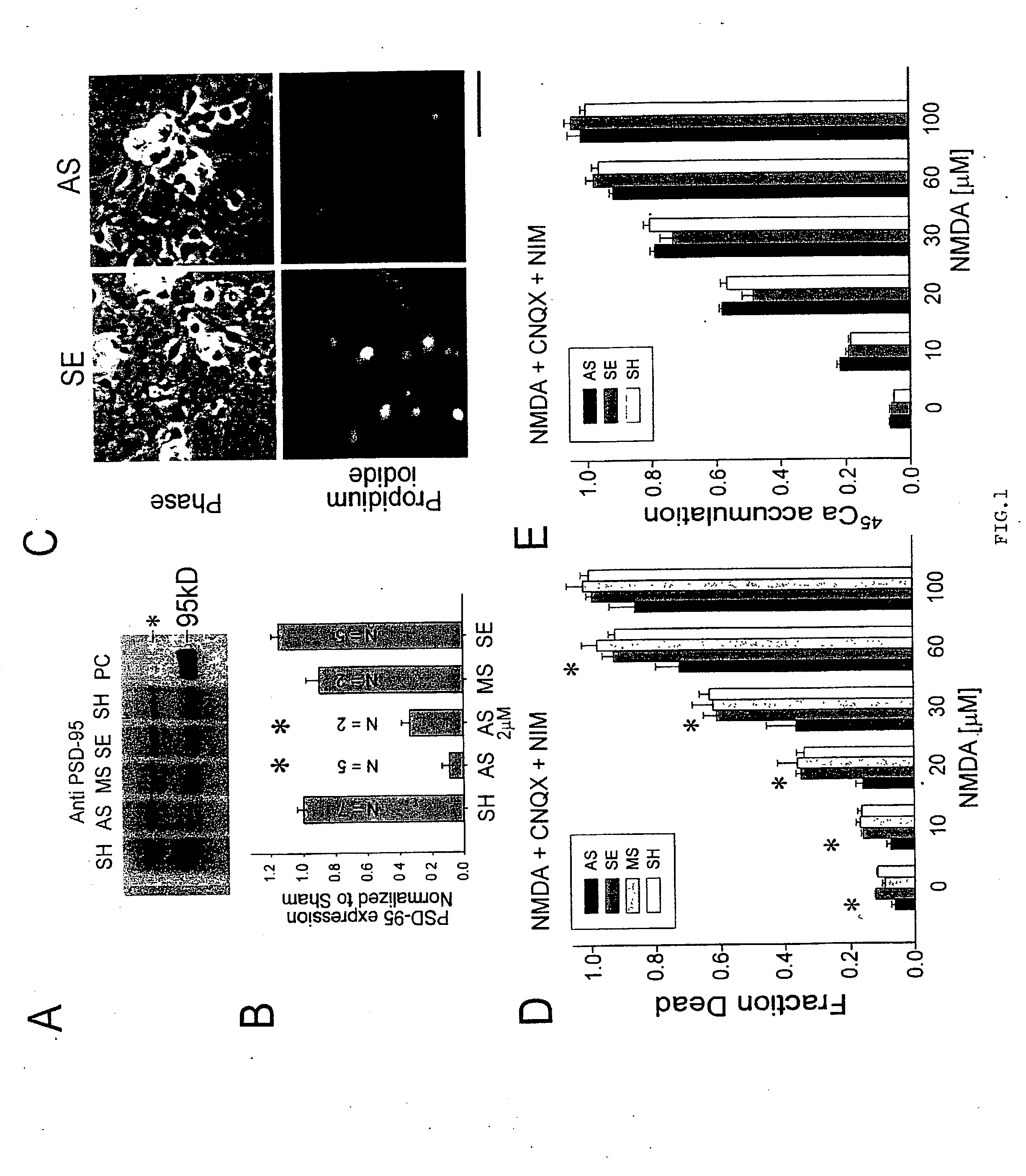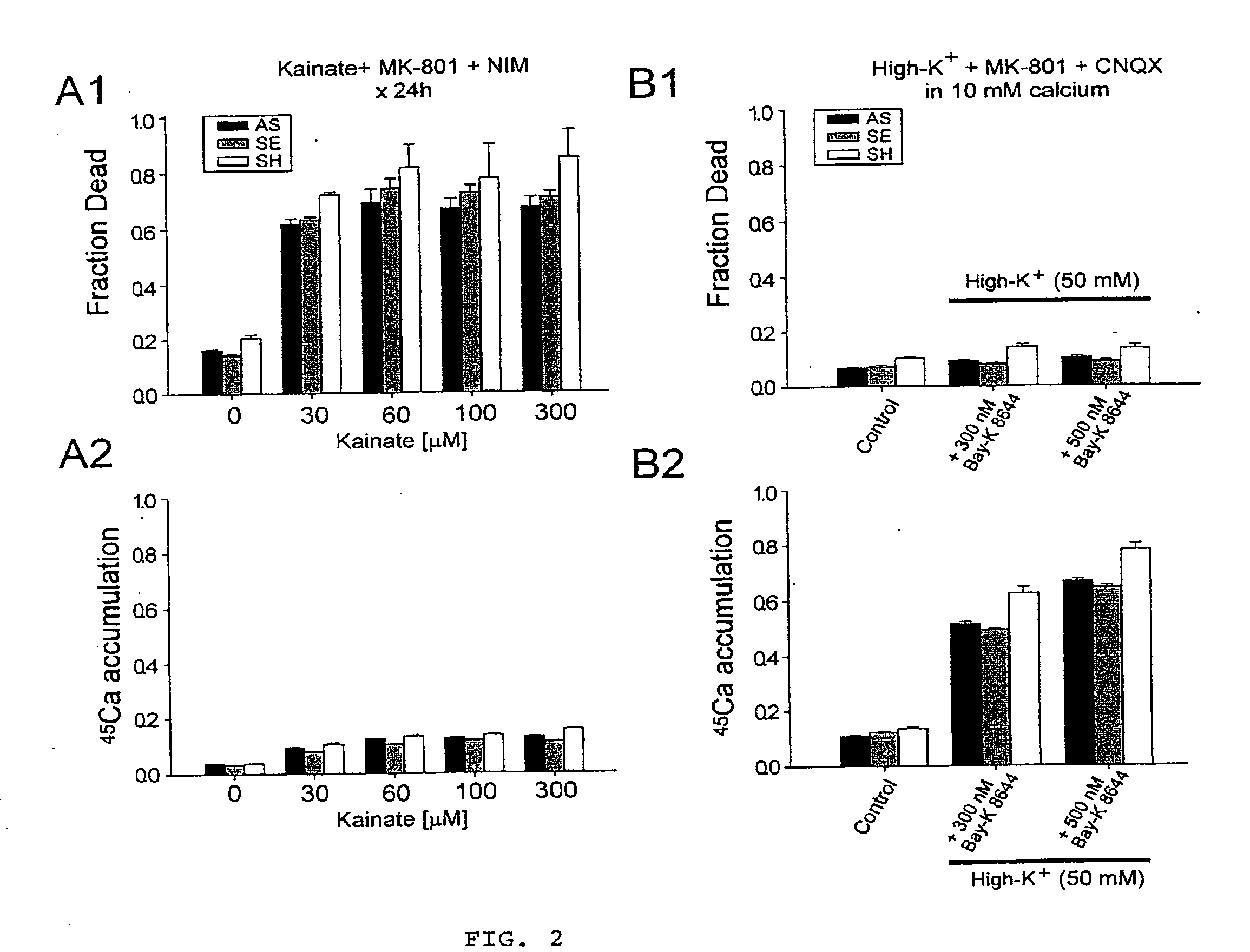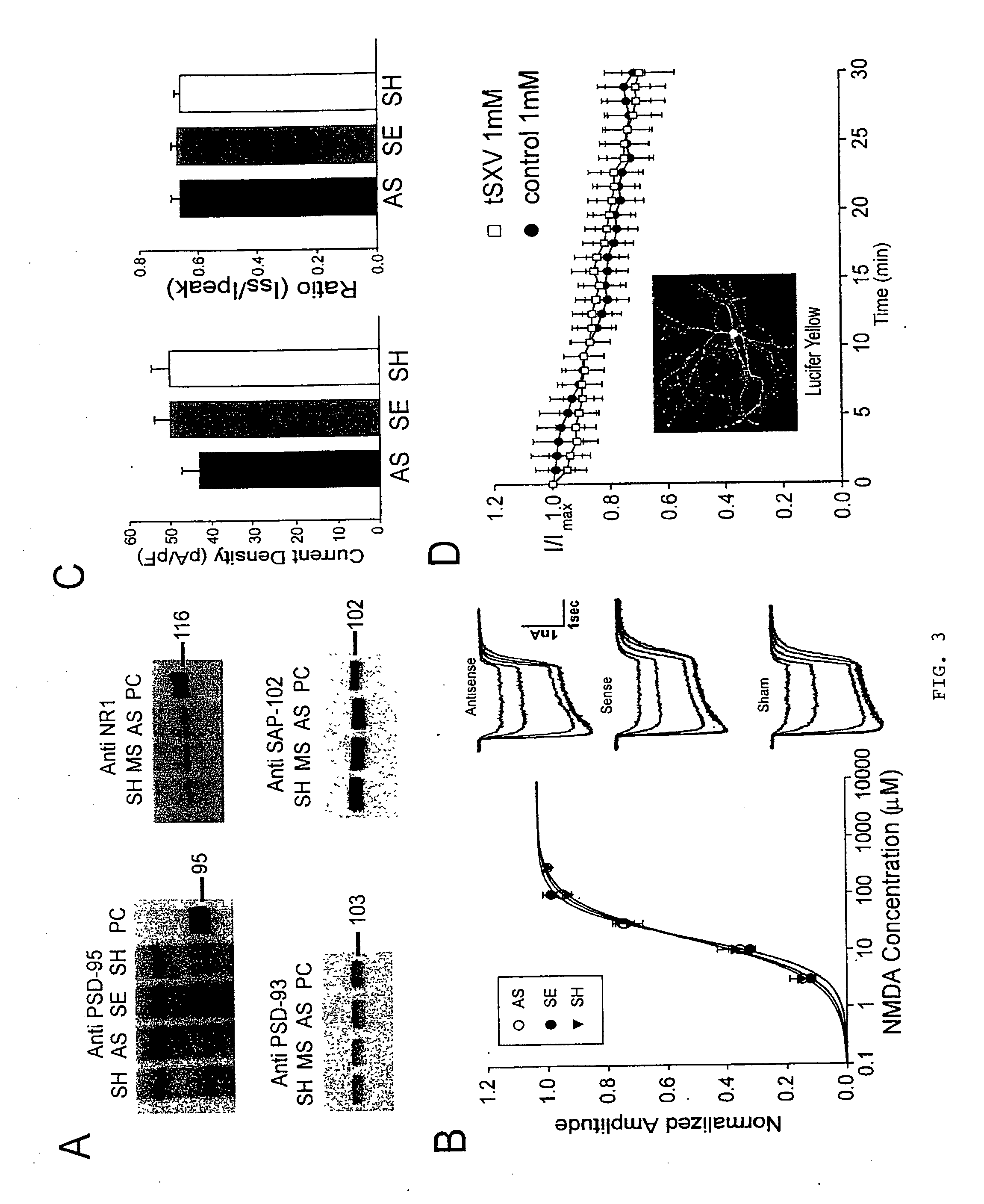Method of reducing injury to mammalian cells
- Summary
- Abstract
- Description
- Claims
- Application Information
AI Technical Summary
Benefits of technology
Problems solved by technology
Method used
Image
Examples
Embodiment Construction
Methods
[0079]Cultured cortical neurons were prepared by standard techniques (4, 9) and switched to serum-free media at 24 h [Neurobasal with B27 supplement (Gibco)]. The AS ODN corresponded to nucleotides 435-449 of mouse PSD-95 / SAP90 mRNA (GeneBank Acc. No. D50621). Filter-sterilized phosphodiester AS SE, and MS ODNs (5 μM) were added in culture medium during feedings at 4, 6, 8 and 10 days after plating. Cultures were used for all experiments (FIGS. 1-4) on day 12. ODN sequences exhibited no similarity to any other known mammalian genes (BLAST search (10)).
[0080]Immunoblotting was done as described in ref. “26”. Tissue was harvested and pooled from 2 cultures / lane. The blotted proteins were probed using a monoclonal anti-PSD-95 mouse IgG1 (Transduction Labs, 1:250 dilution), polyclonal anti PSD-93 (1:1000 dilution) and anti SAP-102 (1:2000 dilution) rabbit serum antibodies (Synaptic Systems GmbH), a monoclonal anti NR1 mouse IgG2a (PharMingen Canada, 1:1000 dilution) or a monoclon...
PUM
| Property | Measurement | Unit |
|---|---|---|
| Time | aaaaa | aaaaa |
| Time | aaaaa | aaaaa |
| Time | aaaaa | aaaaa |
Abstract
Description
Claims
Application Information
 Login to View More
Login to View More - R&D
- Intellectual Property
- Life Sciences
- Materials
- Tech Scout
- Unparalleled Data Quality
- Higher Quality Content
- 60% Fewer Hallucinations
Browse by: Latest US Patents, China's latest patents, Technical Efficacy Thesaurus, Application Domain, Technology Topic, Popular Technical Reports.
© 2025 PatSnap. All rights reserved.Legal|Privacy policy|Modern Slavery Act Transparency Statement|Sitemap|About US| Contact US: help@patsnap.com



